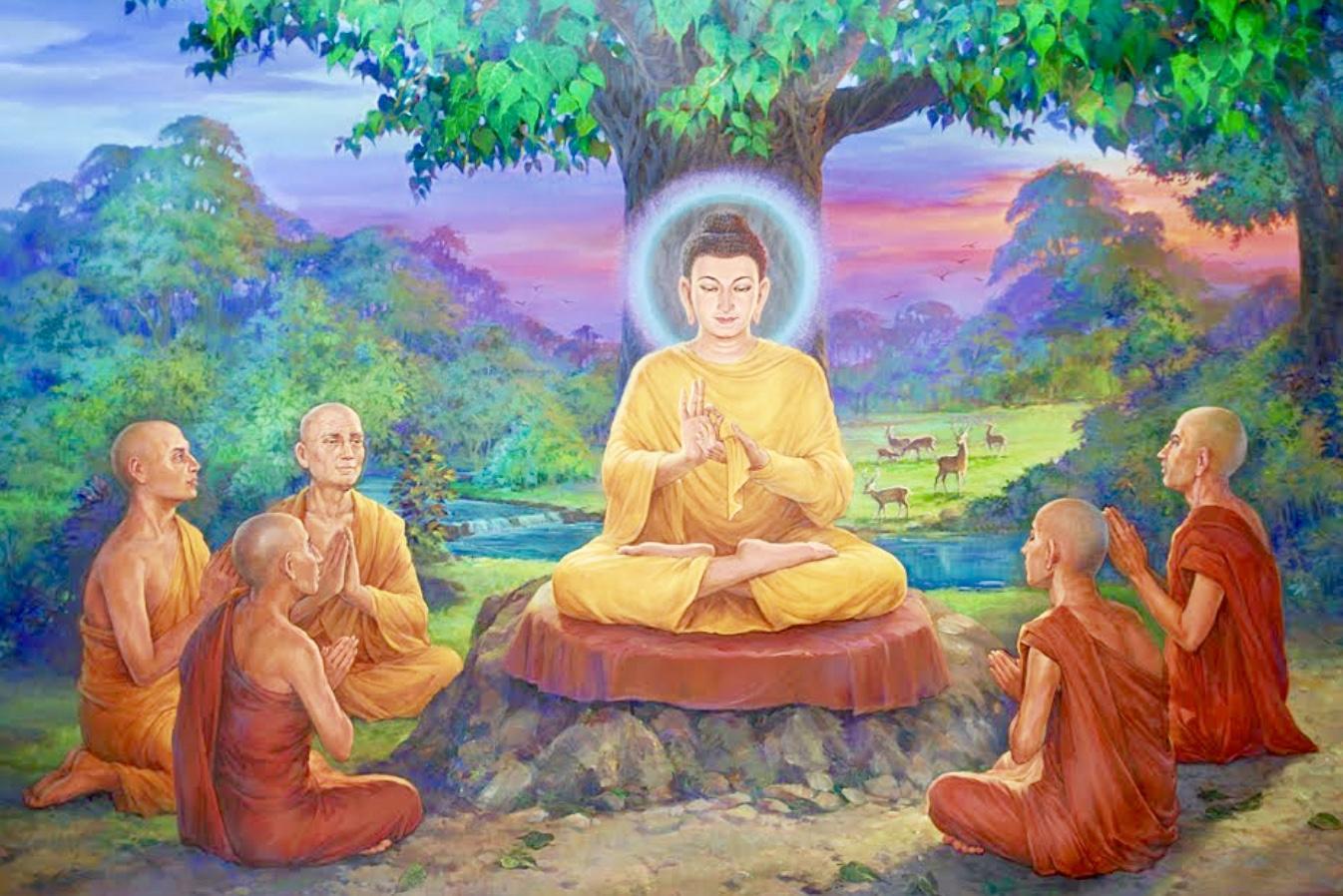 This is the Buddha’s first sermon after enlightenment, word for word. The Buddha summoned his focus and deep concentration to break out of the matrix. How did he do it? This is called the Dhammacakkappavattana Sutta, which means “Setting the Wheel of Dharma in Motion”. With the power of his pure contemplation and very few words, he effectively set the “Wheel of the Doctrine” (and Destiny) in motion in such a way that it changed the world and could never be turned back. There’s so much complex writing and analysis on Buddhism throughout history. We’re looking for utter clarity by going back to his direct teachings.
This is the Buddha’s first sermon after enlightenment, word for word. The Buddha summoned his focus and deep concentration to break out of the matrix. How did he do it? This is called the Dhammacakkappavattana Sutta, which means “Setting the Wheel of Dharma in Motion”. With the power of his pure contemplation and very few words, he effectively set the “Wheel of the Doctrine” (and Destiny) in motion in such a way that it changed the world and could never be turned back. There’s so much complex writing and analysis on Buddhism throughout history. We’re looking for utter clarity by going back to his direct teachings.
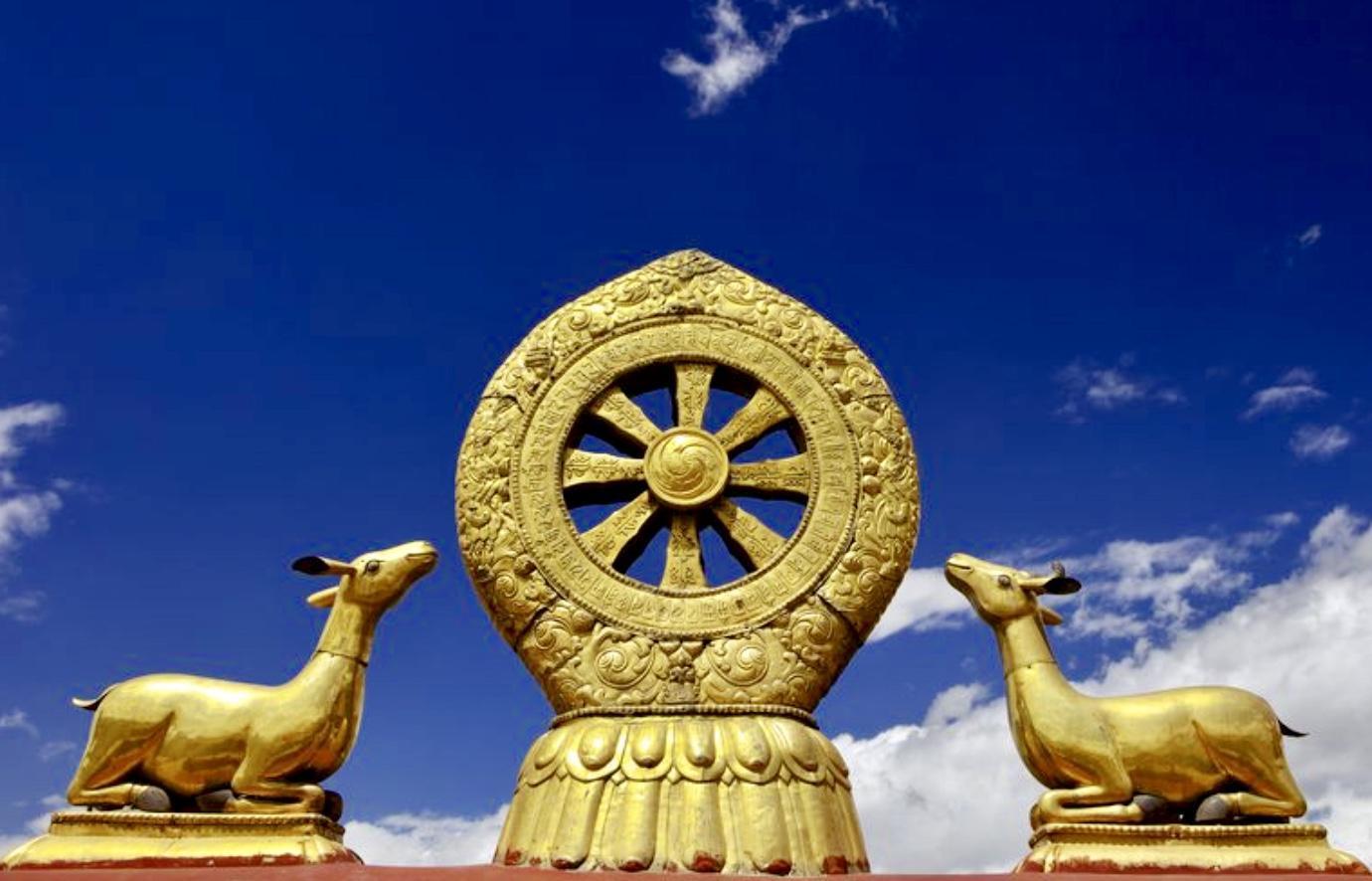
A Dharma wheel represents the eight spokes, and eightfold path of the Buddha’s first teaching in the Deer Park, Sarnath. The deer symbolizes the personification of gentle wisdom. In Tibetan Buddhism, a monastery may have this symbol of a Dharma wheel flanked by two deer on the rooftop.
The Buddha’s first discourse after his awakening:
Immediately after his enlightenment, the Buddha addressed a group of five monks at Deer Park near Benares.
“My Brothers, there are these two extremes that a person on the path should avoid. Which two? One is to plunge oneself into sensual pleasures. And the other is to practice austerities which deprive the body of its needs. Both of these extremes lead to failure.
The Middle Path
“The path I have discovered is the Middle Way, which avoids both extremes and has the capacity to lead one to understanding, liberation, and peace. It is the Noble Eightfold Path of right understanding, right thought, right speech, right action, right livelihood, right effort, right mindfulness and right concentration. I have followed this Noble Eightfold path and have realized understanding, liberation and peace.
The Noble Eightfold Path:
- Right understanding
- Right thought
- Right speech
- Right action
- Right livelihood
- Right effort
- Right mindfulness
- Right concentration
“Brothers, why do I call this path the Right Path? I call it the Right Path because it does not avoid or deny suffering but allows for a direct confrontation with suffering as a means to overcome it. The Noble Eightfold Path is the path of living in awareness. Mindfulness is the foundation. By practicing mindfulness, you can develop concentration, which enables you to attain understanding. Thanks to right concentration, you realize right awareness, thoughts, speech, action, livelihood, and effort. The understanding that develop can liberate you from every shackle of suffering and give birth to true peace and joy.
“Brothers, there are Four Truths: the existence of suffering, the cause of suffering, the cessation of suffering, and the path which leads to the cessation of suffering. I call these the Four Noble Truths.
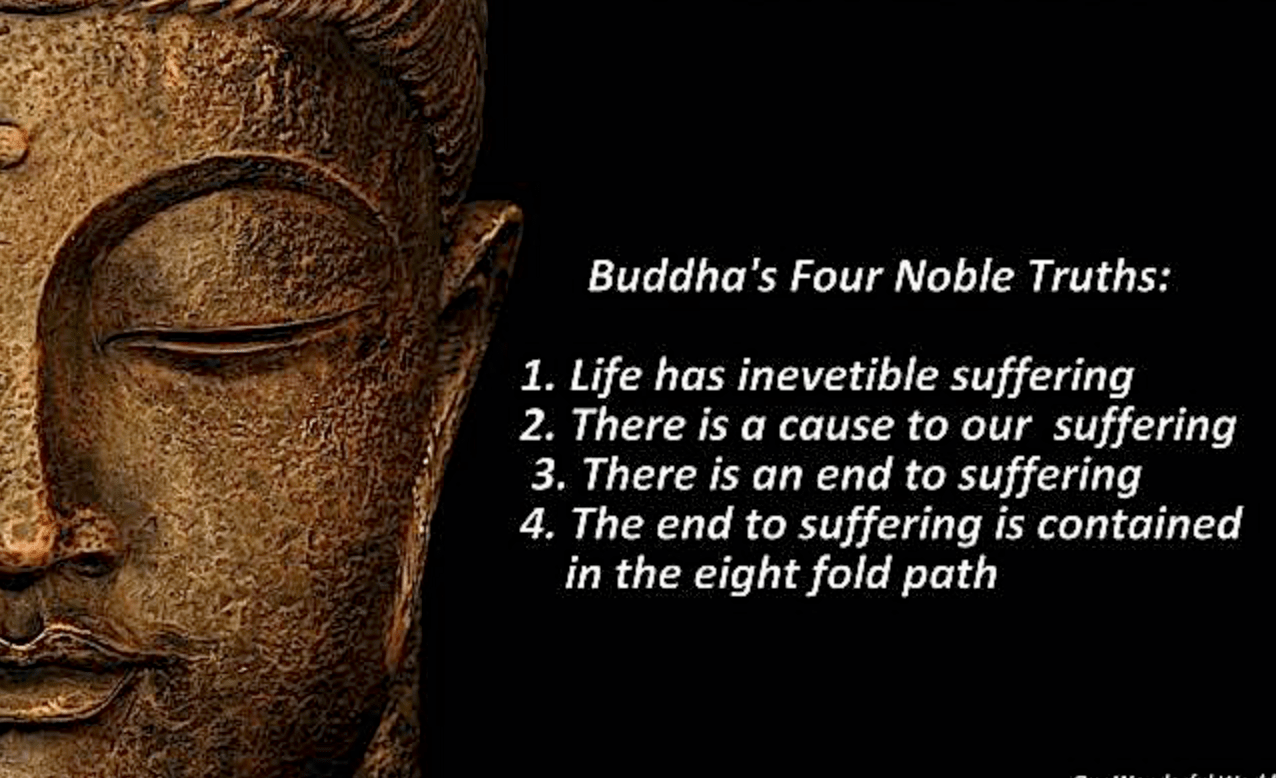
- The first is the existence of suffering. Birth, old age, sickness, and death are suffering. Sadness, anger, jealousy, worry, anxiety, fear, and despair are suffering. Separation from loved ones is suffering. Association with those you dislike is suffering. Desire, attachment, and clinging to the five aggregates are suffering.
- “Brothers, the second truth reveals the cause of suffering. Because of ignorance, people cannot see the truth about life, and they become caught in the flames of desire, anger, jealousy, grief, worry, fear, and despair.
- “Brothers, the third truth is the cessation of suffering. Understanding the truth of life brings about the cessation of every grief and sorrow and gives rise to peace and joy.
- “Brothers, the fourth truth is the path which leads to the cessation of suffering. It is the Noble Eightfold Path, which I have just explained. The Noble Eightfold Path is nourished by living mindfully. Mindfulness leads to concentration and understanding, with liberates you from every pain and sorrow and leads to peace and joy. I will guide you along this path of realization.
“Vision arose, insight arose, discernment arose, knowledge arose, illumination arose within me with regard to things never heard before: ‘This noble truth of stress has been comprehended.’
“The noble truth of the cessation of stress: the complete fading & cessation, renunciation, relinquishment, release, & letting go of that very craving. This noble truth of the cessation of stress has been realized. This is the noble truth of the way of practice leading to the cessation of stress.
“As soon as my knowledge & vision concerning these four noble truths as they have come to be—was truly pure, then I did claim to have directly awakened to the right self-awakening unexcelled in the cosmos with all its unseen guides, contemplatives, brahmans, its royalty & commonfolk. Knowledge & vision arose in me: ‘Unshakable is my release. This is my last birth. There is now no renewed existence.”
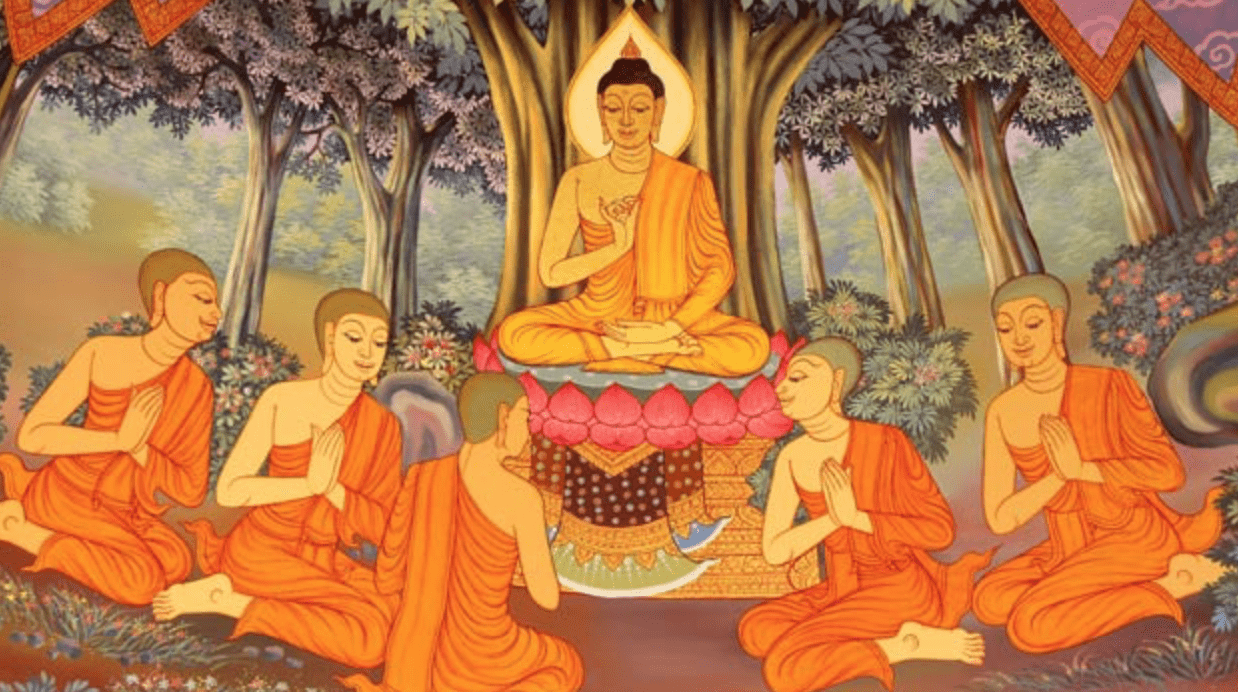
While Siddhartha was explaining the Four Noble Truths, one of the monks, Kondanna suddenly felt a great shining within his own heart. He could taste the liberation he had sought for so long. His face beamed with joy. The Buddha pointed at him and cried, “Kondanna! You’ve got it! You’ve got it!”
Kondanna joined his palms and bowed before Siddhartha. With deepest respect, he spoke, “Venerable Gautama, please accept me as your disciple. I know that under your guidance, I will attain the Great Awakening.”
The other four monks also bowed at Siddhartha’s feet, joined their palms, and asked to be received as disciples. Siddhartha said, “Brothers! The children of the village have given me the name ‘the Buddha.” You too may call me by that name if you like.”
Kondanna asked, “Doesn’t ‘Buddha’ mean ‘One who is awakened’?”
“That is correct, and they call the path that I have discovered ‘the Way of Awakening.’ What do you think of this name?”
“’One who is awakened’! ‘The Way of Awakening’! Wonderful! Wonderful! These names are true, yet simple. We will happily call you the Buddha, and the path you have discovered the Way of Awakening. As you just said, living each day mindfully is the very basis of spiritual practice.” The five monks were of one mind to accept Gautama as their teacher and to call him the Buddha.
The Buddha smiled at them.” Please, brothers, practice with an open and intelligent spirit, and in three months you will have attained the fruit of liberation.”
Notes:
What does it mean to “Turn the Wheel of Dharma”?
Cakka (wheel) was a wheel-like weapon used in wars in ancient India. There was an old legend in India that a raja (king) who would conquer the world would be the Rajacakkavattin, i.e. “The wheel-turning king”, and at the time of his birth, a wheel would appear in the sky, prophesying that he would be unconquerable in the future. It is symbolically expressed by the cakka (wheel) which cannot be turned back
In Buddhism the wheel is used as a metaphor of the Dharma preached by the Buddha. Once the Buddha’s Dhammacakka emerged, all the wrong thinking and evil things would vanish.
The dharma wheel is represented with eight spokes, representing the Noble Eight-fold Path. The Buddha’s first turning of the wheel of Dharma took place at Deer Park in present-day Benares. Hence the images of deer in sacred art.
Four places regarded as holy places of Buddhism:
⑴ Sarnath, Benares, where the Buddha gave this talk and initially turned the wheel of Dharma
⑵ Lumbini Grove, where the Buddha was born
⑶ Buddhagaya, where the Buddha attained enlightenment
⑷ Kusinara, where the Buddha passed away.
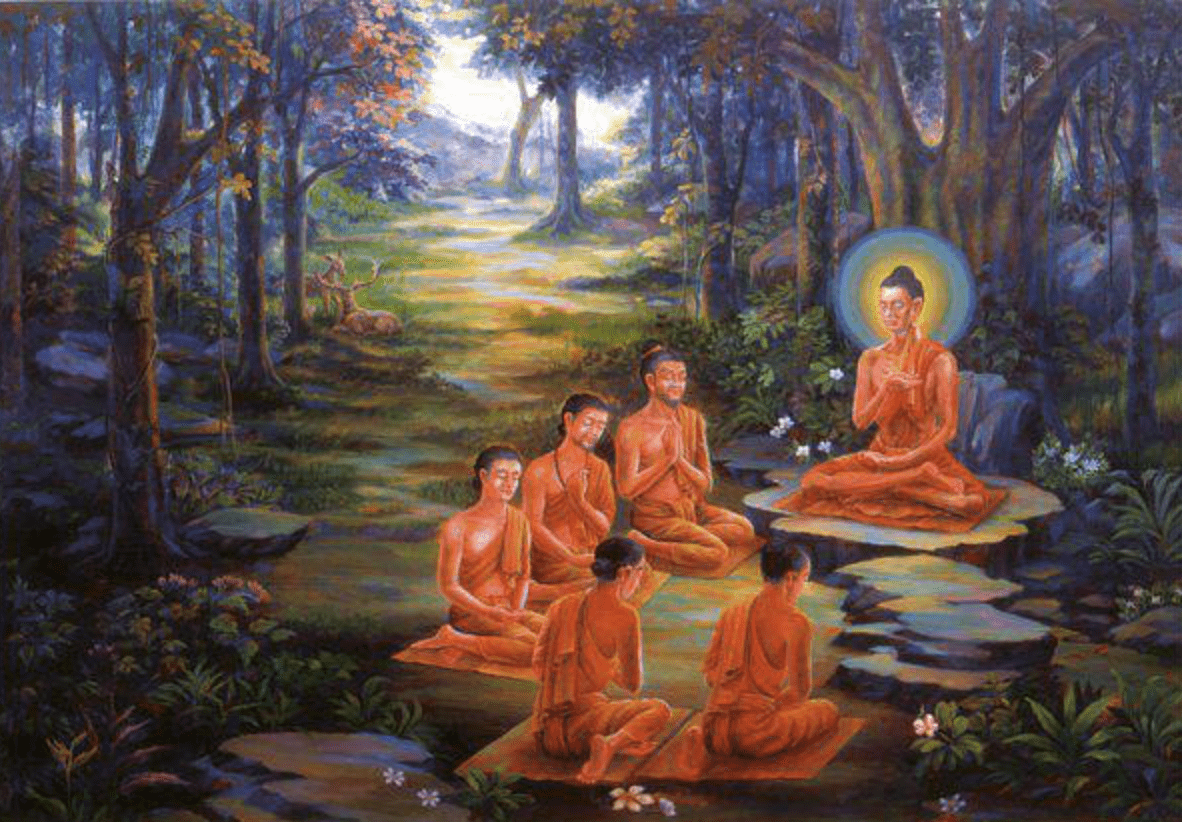
Significance:
Having heard the cry of the devas of the realm of the Four Great Kings, the Tavatiṃsa devas … the Yama devas … the Tusita devas … the Nimmanarati devas … the Paranimmitavasavatti devas … the devas of Brahma’s company raised a cry: “At Baraṇasi, in the Deer Park at Isipatana, this unsurpassed Wheel of the Dhamma has been set in motion by the Blessed One, which cannot be stopped by any ascetic or brahmin or deva or Mara or Brahma or by anyone in the world.”
Thus at that moment, at that instant, at that second, the cry spread as far as the brahma world, and this ten thousandfold world system shook, quaked, and trembled, and an immeasurable glorious radiance appeared in the world surpassing the divine majesty of the devas.
Then the Blessed One uttered this inspired utterance: “Koṇḍañña has indeed understood! Koṇḍañña has indeed understood!” In this way the Venerable Koṇḍañña acquired the name “Añña Koṇḍañña—Koṇḍañña Who Has Understood.
More Sources:
- https://84000.co/translation/toh95#UT22084-046-001-chapter-26
Chapter 26, TURNING THE WHEEL OF DHARMA, The Play in Full (Lalitavistara), རྒྱ་ཆེར་རོལ་པ།
- Thich Nhat Hanh, Path of Compassion: Stories from the Buddha’s Life
- https://www.accesstoinsight.org/tipitaka/sn/sn56/sn56.011.than.html
- https://www.dhammatalks.org/suttas/SN/SN56_11.html
- https://suttacentral.net/discourses


